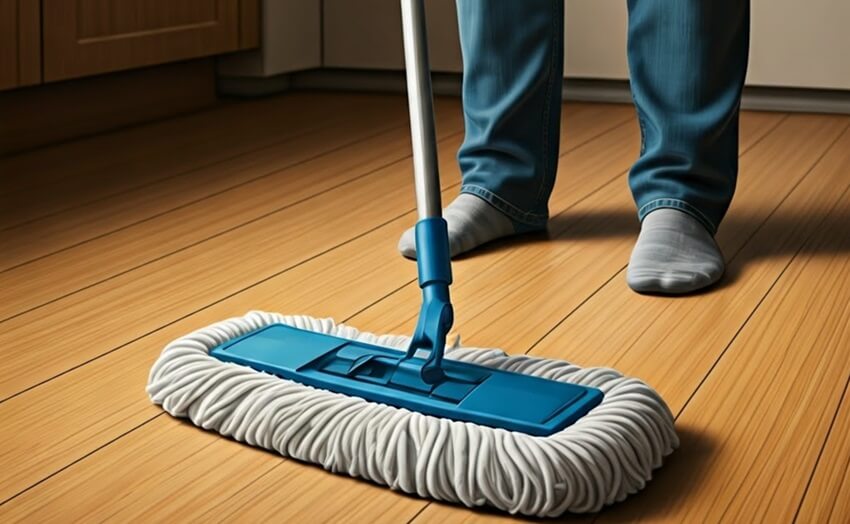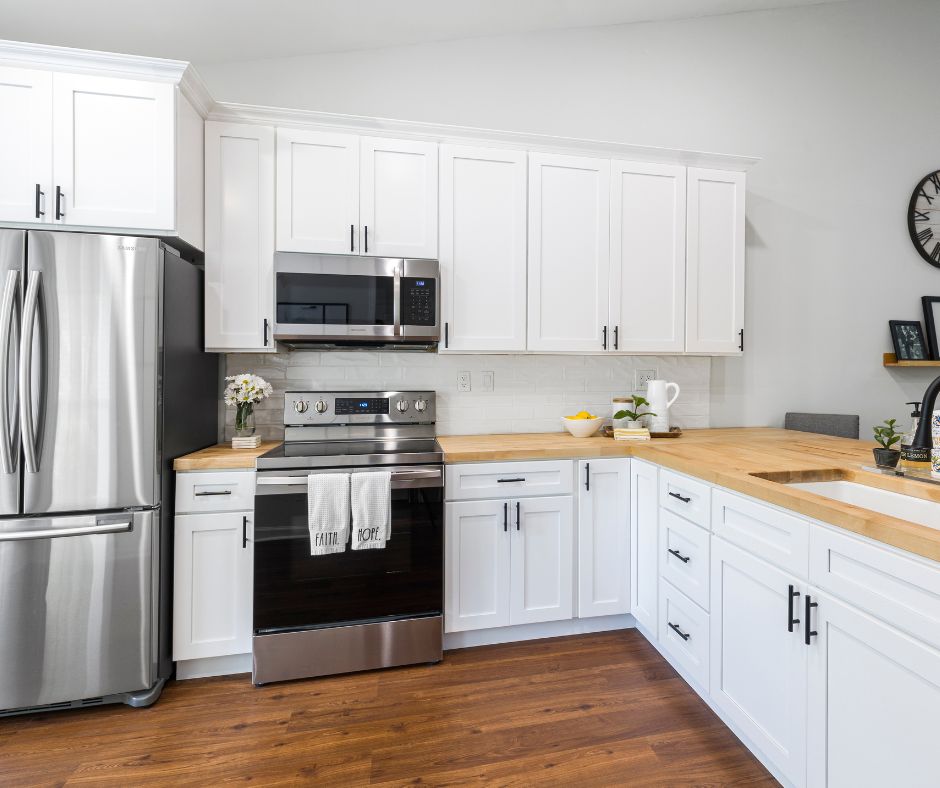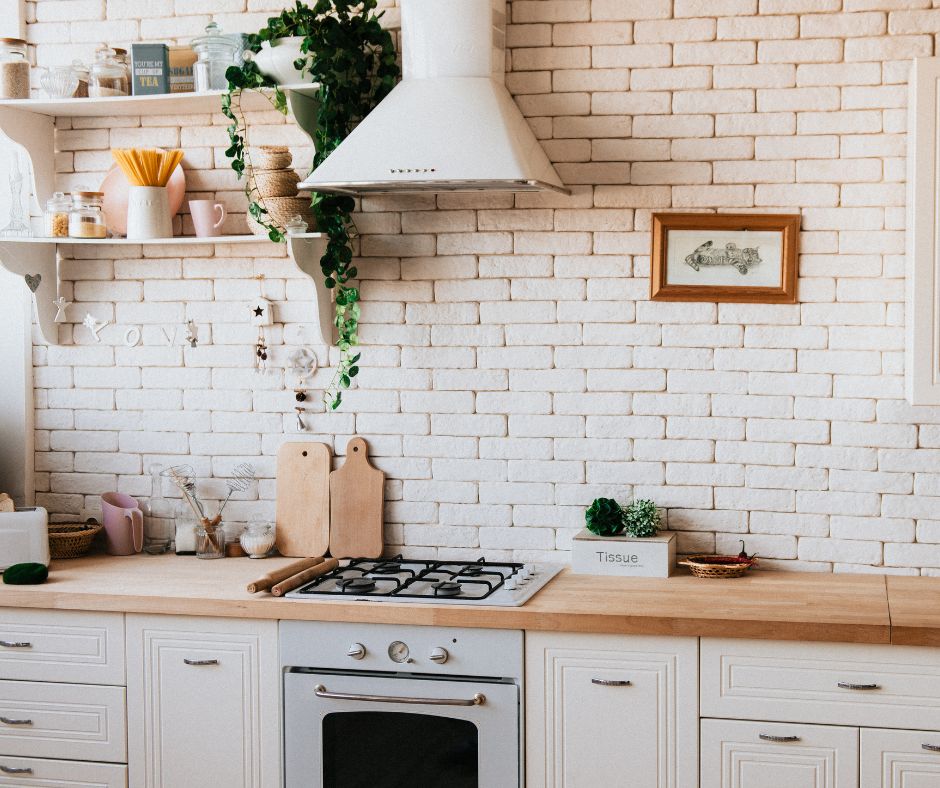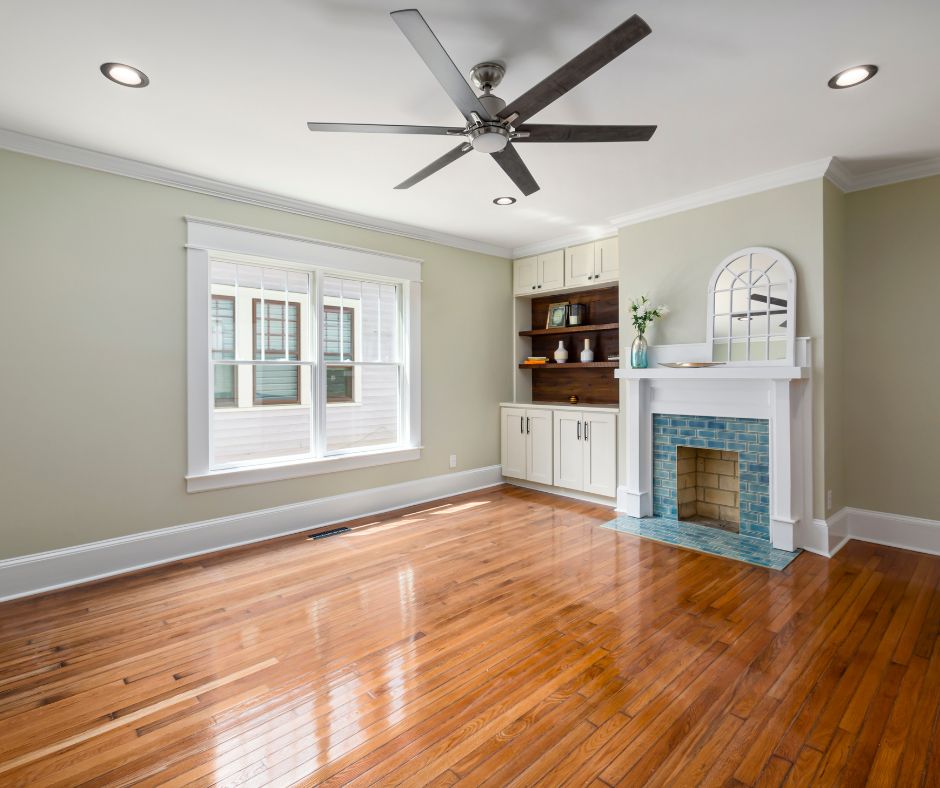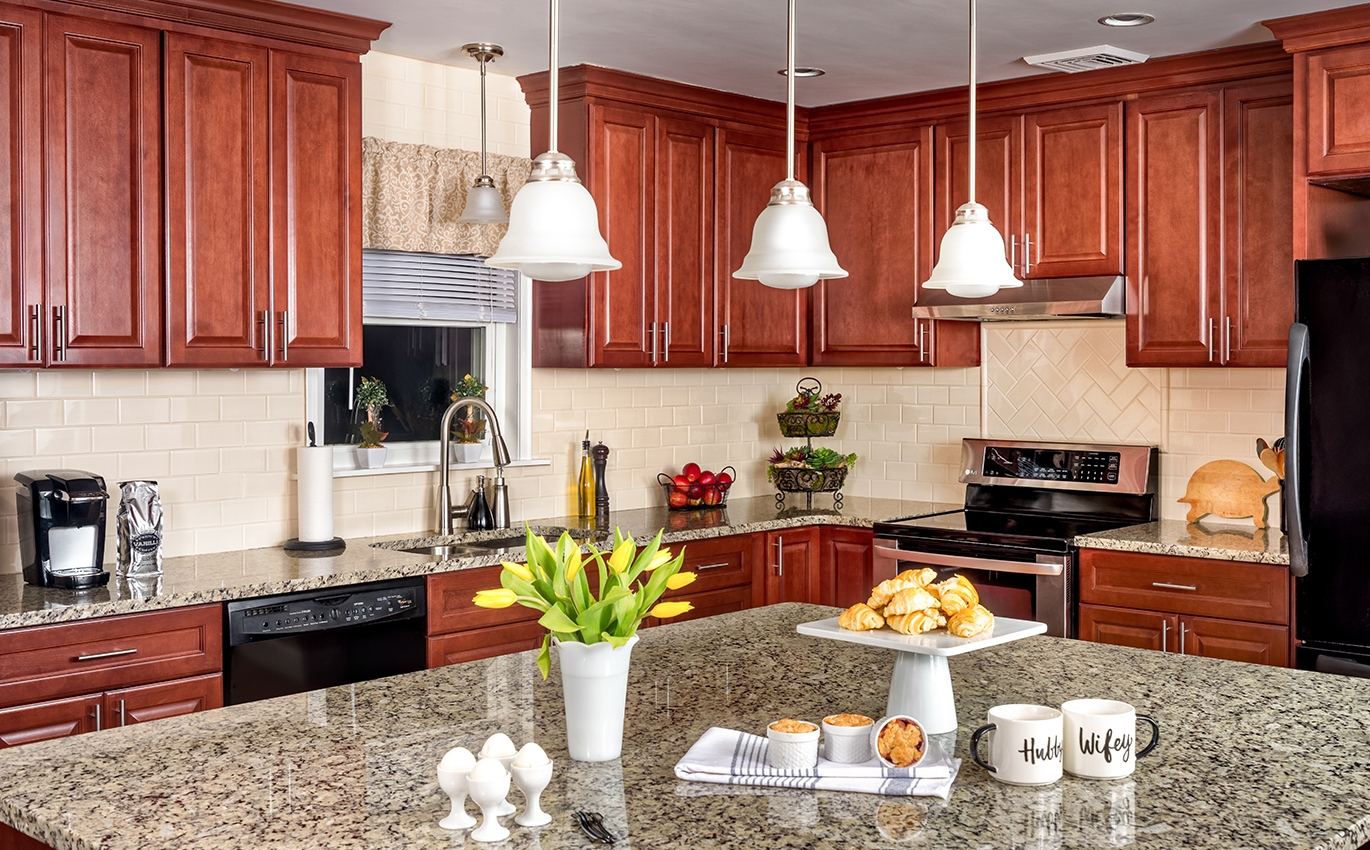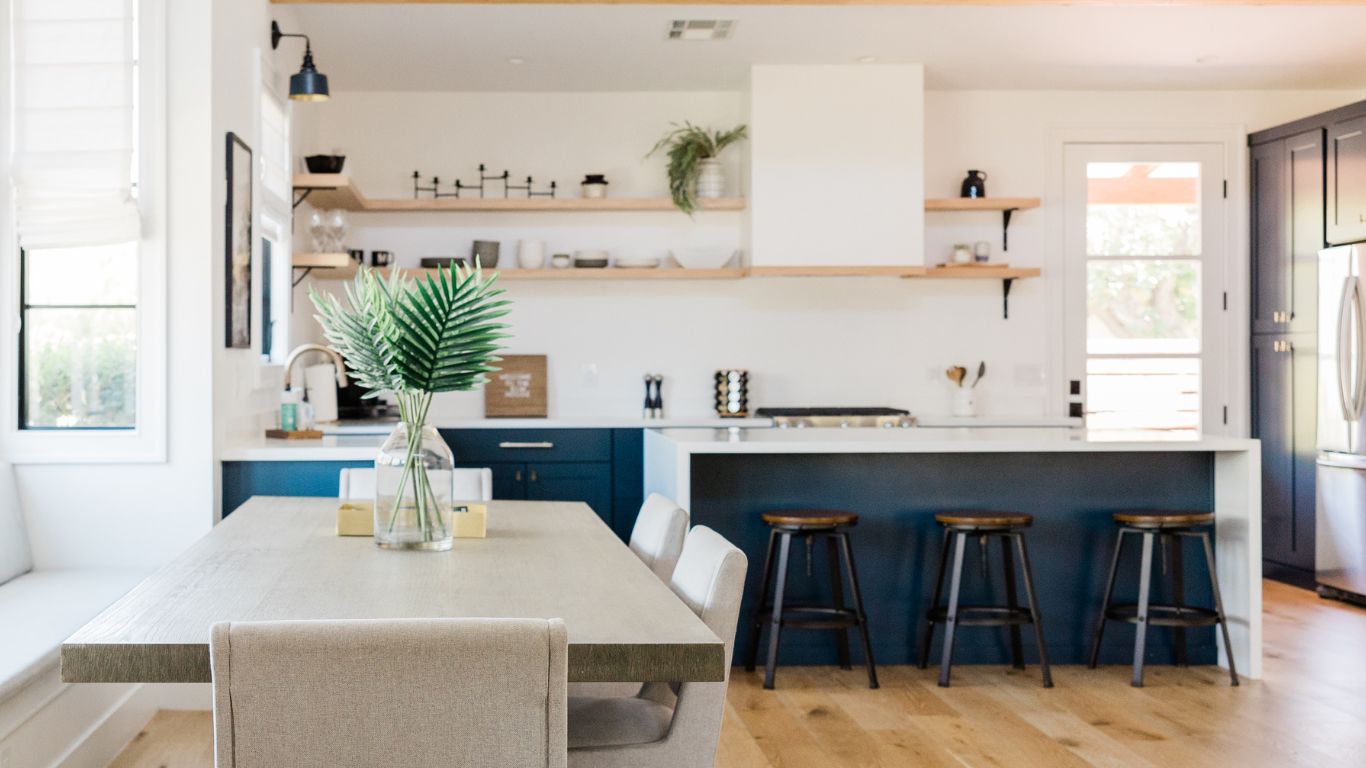In the hustle and bustle of our lives, certain areas of our homes and spaces experience more activity than others. These high-traffic zones, like hallways, entryways, and living rooms, bear the brunt of constant footfalls and movement. As a result, selecting the right flooring becomes a crucial decision to ensure longevity, aesthetics, and functionality.
We’ll explore the Top 10 FAQs about Navigating the Best Flooring Options for High-Traffic Areas, providing insights and solutions to help you navigate through the array of options available. Whether you’re seeking elegance, resilience, or a balance between the two, we’ll delve into the materials that best withstand the rigors of everyday life. From luxurious tiles that exude sophistication to eco-friendly alternatives that make a statement, we’ll guide you in making informed decisions that suit your preferences and needs.
What defines a high-traffic area when it comes to flooring?
A high-traffic area refers to spaces in homes or commercial establishments that experience a constant influx of people traversing through them. These areas are characterized by frequent footfalls, bustling activity, and consistent movement. Hallways, entryways, kitchens, and living rooms are prime examples of high-traffic spaces. Understanding what constitutes a high-traffic area is essential because the flooring in these zones requires specific attributes to endure the continuous stress it faces.
Flooring in high-traffic areas must be exceptionally durable and resistant to wear and tear. Since foot traffic can quickly take a toll on flooring materials, it’s crucial to choose options that can maintain their quality and appearance despite the constant movement. This durability extends the lifespan of the flooring, reduces maintenance costs, and ensures the aesthetic appeal of the space remains intact.
When considering flooring options for high-traffic areas, factors such as material hardness, scratch resistance, and ease of cleaning become paramount. By selecting appropriate flooring materials designed to withstand heavy usage, you can ensure that your high-traffic zones remain functional, visually appealing, and safe for everyone who traverses them.
In summary, a high-traffic area involves spaces with a consistent flow of people, necessitating flooring that’s robust enough to endure wear and tear. Identifying these zones in your home or commercial setting is the first step in making informed flooring decisions that ensure both longevity and aesthetics.
Why is it important to choose appropriate flooring for high-traffic zones?
Selecting the right flooring for high-traffic zones is a critical decision that directly impacts the longevity, appearance, and functionality of your space. High-traffic areas, such as hallways, entryways, and commercial spaces, witness a constant influx of foot traffic, which subjects the flooring to substantial wear and tear. Choosing appropriate flooring for these zones goes beyond mere aesthetics; it’s about ensuring the durability and performance of the material under demanding circumstances.
One of the primary reasons to opt for suitable flooring in high-traffic areas is longevity. Flooring materials not designed to withstand heavy usage can quickly show signs of wear, including scratches, scuffs, and even cracking. Such issues can lead to costly repairs or replacements, impacting your budget and disrupting the overall ambiance of the space. Furthermore, choosing the right flooring for high-traffic zones also enhances safety. Deteriorating or damaged flooring can pose tripping hazards, potentially leading to accidents and injuries. By selecting durable materials, you create a safer environment for everyone who frequents the area.
Moreover, appropriate flooring ensures the continuity of your design aesthetic. In commercial spaces, for instance, worn-out flooring can give a negative impression to clients and customers. In homes, it might detract from the overall look you’ve carefully curated. Ultimately, investing in flooring that’s designed to withstand heavy foot traffic is a proactive approach that saves you money in the long run, maintains the appearance of your space, and creates a safer and more visually appealing environment for both residents and visitors.
Choosing the right flooring material for areas with frequent foot traffic is crucial to ensure durability, aesthetics, and functionality. Certain flooring options are inherently better equipped to withstand the demands of high-traffic zones due to their robust nature and resistance to wear and tear.
Porcelain Tiles
Porcelain tiles are a popular choice for high-traffic areas due to their exceptional durability and versatility. They are highly resistant to scratches, stains, and moisture, making them ideal for spaces like hallways, kitchens, and entryways. Additionally, porcelain tiles come in a wide range of styles, colors, and textures, allowing you to find the perfect fit for your design preferences.
Luxury Vinyl
Luxury vinyl flooring has gained popularity for its ability to replicate the look of natural materials like wood or stone while offering superior durability. It is resistant to dents, scratches, and moisture, making it a suitable option for both residential and commercial high-traffic areas.
Certain Laminate Flooring
While not all laminates are created equal, some laminate flooring options are designed to withstand heavy foot traffic. Laminate flooring with a high Abrasion Class (AC) rating is recommended for these areas, as it indicates a higher level of durability.
Engineered Hardwood
Engineered hardwood is a more stable and moisture-resistant alternative to solid hardwood. It offers the warmth and elegance of real wood while being better equipped to handle fluctuations in temperature and humidity often encountered in high-traffic areas.
Commercial-Grade Carpet Tiles
In commercial settings, carpet tiles designed for high-traffic areas can be a suitable choice. These tiles are often made with durable materials, and their modular design allows for easy replacement of individual tiles in case of damage. When choosing flooring materials for high-traffic areas, it’s essential to consider factors such as material hardness, maintenance requirements, and the specific needs of the space. By selecting materials that align with the demands of the area and your design preferences, you can ensure that your flooring remains both functional and visually appealing for years to come.
Is hardwood flooring a suitable choice for high-traffic zones?
Hardwood flooring can indeed be a suitable choice for high-traffic zones, but several factors need to be considered before making this decision. Hardwood offers a timeless beauty and natural charm that can enhance the aesthetics of any space. However, its performance in high-traffic areas depends on the type of wood, finish, and maintenance routine.
Type of Wood
Some hardwood species are naturally more durable than others. For instance, oak, hickory, and maple are known for their hardness and ability to withstand heavy foot traffic. These woods are less prone to dents and scratches, making them preferable choices for areas with frequent activity.
Finish
The finish applied to hardwood flooring plays a significant role in its durability. A high-quality finish adds a protective layer that shields the wood from wear, stains, and moisture. For high-traffic zones, consider choosing a finish that offers enhanced resistance to scratches and abrasion.
Maintenance
Regular maintenance is essential to keep hardwood flooring looking its best in high-traffic areas. Promptly clean up spills, use floor mats at entrances to trap dirt and debris, and avoid using abrasive cleaning agents that can damage the finish. While hardwood flooring can be an excellent choice for high-traffic areas, it’s essential to assess the specific demands of your space. If you opt for hardwood, consider the wood species, finish type, and maintenance routine that align with the level of foot traffic and usage. By making informed choices, you can enjoy the timeless elegance of hardwood flooring without compromising on durability.
What are the advantages of using tile or stone flooring in high-traffic locations?
Tile and stone flooring offer a range of advantages that make them well-suited for high-traffic locations. These materials provide both durability and aesthetic appeal, making them popular choices for areas that experience constant foot traffic.
Durability
Tile and stone are among the most durable flooring options available. They can withstand the wear and tear caused by heavy foot traffic, making them suitable for areas like entryways, hallways, kitchens, and commercial spaces. Their resistance to scratches, stains, and moisture ensures that they maintain their appearance even in the face of continuous use.
Ease of Maintenance
Both tile and stone flooring are easy to clean and maintain, which is particularly beneficial in high-traffic areas. Regular sweeping and occasional mopping are usually sufficient to keep these surfaces looking pristine. Spills and stains can be easily wiped away without causing damage.
Design Versatility
Tile and stone come in a wide variety of colors, patterns, and textures, allowing you to achieve a design that suits your aesthetic preferences. Whether you prefer a sleek and modern look or a more rustic feel, you can find tiles or stones that align with your vision.
Temperature Regulation
Stone flooring, in particular, has the advantage of thermal mass. It can absorb and release heat slowly, helping to regulate indoor temperatures and contributing to energy efficiency.
Longevity
Properly installed and maintained tile and stone flooring can last for decades, making them a cost-effective investment in the long run. While tile and stone flooring offer numerous advantages, it’s essential to consider factors such as the hardness of the material, slip resistance, and the comfort of standing on these surfaces for extended periods. By choosing the right type of tile or stone and ensuring proper installation, you can enjoy the benefits of durable and visually appealing flooring in your high-traffic areas.
Absolutely, budget-conscious consumers can find flooring alternatives that offer durability without breaking the bank. While high-traffic areas demand robust materials, several budget-friendly options deliver both resilience and value for your money.
Laminate Flooring
Laminate flooring is a cost-effective choice that can mimic the appearance of hardwood, stone, or tile. While not all laminates are created equal, those with a high Abrasion Class (AC) rating are specifically designed to endure heavy foot traffic. This makes them a practical solution for busy areas without compromising on style.
Luxury Vinyl Planks (LVP)
Luxury vinyl planks offer the look of hardwood or stone at a fraction of the cost. LVP is not only more affordable than natural materials, but it’s also water-resistant and easy to maintain, making it an excellent option for high-traffic spaces that may encounter spills.
Commercial-Grade Carpet Tiles
In some cases, carpet tiles designed for commercial use can provide a budget-friendly option for high-traffic areas. These tiles are designed to be durable and easy to replace if damaged, reducing long-term maintenance costs.
Bamboo Flooring
Bamboo is an eco-friendly and cost-effective alternative to hardwood. It’s known for its durability and resistance to moisture, making it suitable for areas with frequent foot traffic.
Engineered Wood
Engineered wood is another budget-friendly alternative that offers the look of hardwood at a lower cost. It’s constructed with a real wood veneer over a plywood base, providing stability and affordability. When exploring budget-friendly flooring alternatives, it’s essential to balance cost considerations with the durability and performance requirements of your high-traffic areas. Look for materials with high durability ratings and consider their long-term maintenance needs to ensure you’re making a wise investment that withstands the test of time.
How do I properly maintain and clean flooring in high-traffic zones?
Proper maintenance and cleaning are essential to ensure that your flooring in high-traffic zones remains in optimal condition over the years. High-traffic areas, such as hallways, entryways, and kitchens, are more susceptible to wear and dirt accumulation, but with a consistent cleaning routine, you can maintain their appearance and extend their lifespan.
Regular Cleaning
Regularly clean high-traffic flooring areas by sweeping or vacuuming to remove loose dirt, dust, and debris. The accumulation of grit can lead to scratches and damage over time.
Prompt Spill Cleanup
Accidents happen, and when spills occur, it’s essential to clean them up promptly. Liquids can seep into cracks and crevices, leading to staining or warping.
Use Appropriate Cleaners
Use cleaning products that are recommended for your specific flooring type. Different materials have different cleaning requirements, and using the wrong cleaners can damage the finish or surface.
Protective Measures
Place mats or rugs at entrances and high-traffic areas to trap dirt and prevent it from spreading across the floor. Ensure that these mats are cleaned regularly to avoid dirt buildup.
Avoid using abrasive cleaning tools like steel wool or harsh scrub brushes, as they can scratch or damage the flooring surface.
Periodic Deep Cleaning
Depending on the material, schedule periodic deep cleaning. For example, tile and grout may require occasional professional cleaning to remove embedded dirt.
Wipe Feet
Encourage individuals to wipe their feet before entering high-traffic areas. Having a shoe rack or designated area for shoes near the entrance can help minimize the amount of dirt and debris brought indoors.
Furniture Pads
Place furniture pads under the legs of chairs and tables to prevent scratches and gouges caused by moving furniture. By adopting a proactive and consistent approach to maintenance and cleaning, you can preserve the appearance and integrity of your high-traffic flooring areas. Regular care not only enhances the longevity of the flooring but also maintains a clean and inviting environment for residents and visitors alike.
Can carpet be a viable option for high-traffic areas?
While hardwood, tile, and stone are popular choices for high-traffic areas, carpet can also be a viable option depending on your specific needs and preferences. Choosing the right type of carpet and implementing proper maintenance practices can make it suitable for areas that experience frequent foot traffic.
Durable Carpet Materials
When selecting carpet for high-traffic areas, opt for materials known for their durability. Nylon and polyester are common choices due to their resistance to wear and staining. They can withstand the rigors of heavy foot traffic and maintain their appearance over time.
Loop Pile or Berber
Loop pile or Berber carpets, characterized by tightly woven loops, are more resilient and better at hiding footprints and wear. They can be a suitable choice for busy areas as they offer enhanced durability.
Commercial-Grade Carpet Tiles
In commercial settings, carpet tiles designed for high-traffic zones are a practical choice. These tiles are made to withstand heavy use, and their modular design allows for easy replacement of individual tiles if damage occurs.
Regular Cleaning
Regular vacuuming is essential for maintaining carpet in high-traffic areas. Vacuuming removes dirt and debris that can contribute to the deterioration of carpet fibers.
Professional Cleaning
Schedule professional carpet cleaning periodically to remove deep-seated dirt, stains, and allergens. This helps extend the lifespan of the carpet and keeps it looking its best.
Entryway Mats
Place mats at entrances to trap dirt and moisture, preventing them from being tracked onto the carpeted areas. This minimizes the amount of dirt that reaches the carpet.
Prompt Stain Removal
Address spills and stains promptly to prevent them from setting into the carpet fibers. Blot the stain gently with a clean cloth and a recommended carpet cleaner.
Consider Design and Comfort
In addition to durability, consider the design and comfort of the carpet. The right choice can contribute to the overall ambiance of the space. Ultimately, carpet can be a viable option for high-traffic areas if you choose the right type of carpet and implement proper maintenance practices. Consider the specific demands of the area and your preferences to determine whether carpet aligns with your needs.
What key factors should I consider when choosing the ideal flooring for my specific high-traffic area?
When selecting the ideal flooring for a high-traffic area, several key factors should be carefully considered to ensure that you choose a material that meets both functional and aesthetic requirements.
Durability
One of the most critical factors is durability. High-traffic areas subject flooring to constant wear and tear, so opt for materials known for their resilience, such as porcelain tiles, luxury vinyl, or hardwood species like oak or maple.
Material Hardness
Consider the hardness of the material. Harder materials are more resistant to scratches and dents caused by foot traffic.
Maintenance Requirements
Evaluate the maintenance needs of the flooring material. Some materials, like tile and luxury vinyl, are easy to clean and maintain, while others, like natural stone, may require more attention.
Slip Resistance
In areas prone to spills or moisture, prioritize slip-resistant flooring to prevent accidents. Look for flooring materials with textured surfaces that provide better traction.
Aesthetic Appeal
The flooring you choose should complement the overall design of the space. Consider colors, patterns, and textures that align with your aesthetic preferences.
Budget
Set a budget for your flooring project and explore options within that range. Keep in mind that while certain materials may have a higher upfront cost, their durability can save you money in the long run.
Noise Absorption
Consider the noise levels in the area. Some flooring materials, like carpet and cork, can absorb sound, making them suitable for spaces where noise reduction is important.
Comfort
If the area is frequented by individuals who stand for extended periods, consider materials that offer comfort underfoot, such as cork or rubber.
Installation and Maintenance Costs
Factor in both the initial installation costs and long-term maintenance expenses. Some materials may require more frequent maintenance, impacting their overall cost-effectiveness.
Space Usage
Consider the specific usage of the area. For example, a kitchen may require flooring that is resistant to spills and stains, while an entryway may need materials that can handle dirt and moisture. By carefully evaluating these factors and tailoring your flooring choice to the unique demands of the space, you can select a flooring material that combines durability, functionality, and aesthetics, ensuring a successful and lasting investment.
Are there environmentally friendly flooring choices for high-traffic zones?
Yes, there are environmentally friendly flooring choices that offer both durability and sustainability for high-traffic areas. These options allow you to make an eco-conscious decision without compromising on the quality or aesthetics of your flooring.
Bamboo Flooring
Bamboo is a rapidly renewable resource that offers the appearance of hardwood. It’s durable and can handle heavy foot traffic while being more sustainable than traditional hardwood.
Cork Flooring
Cork is harvested from the bark of cork oak trees, allowing the tree to regenerate and sustainably provide more cork. It’s naturally resilient and offers a comfortable underfoot feel.
Linoleum Flooring
Linoleum is made from natural materials such as linseed oil, cork dust, and wood flour. It’s durable and biodegradable, making it an eco-friendly option.
Recycled Content Flooring
Some flooring options, such as carpet tiles and vinyl, are available with recycled content. These choices help reduce waste and promote recycling efforts.
Reclaimed Wood
Using reclaimed wood for flooring not only adds character to your space but also repurposes existing materials, reducing the demand for new resources.
Concrete Flooring
Polished concrete is a sustainable option that can withstand heavy traffic. It’s energy-efficient, as it can retain and radiate heat, contributing to passive solar heating.
Terrazzo Flooring
Terrazzo is a composite material made from recycled stone, glass, and other aggregates. It’s durable and offers a unique aesthetic appeal.
Rubber Flooring
Rubber flooring made from recycled tires is a resilient and slip-resistant option for high-traffic areas. It’s also comfortable to walk on. When selecting environmentally friendly flooring for high-traffic zones, ensure that the chosen material aligns with your sustainability goals while meeting the performance needs of the area. These options demonstrate that you can make environmentally responsible choices without compromising on the durability, aesthetics, or functionality of your flooring.
Conclusion
In your quest to make the most informed decisions for your high-traffic areas, we hope these comprehensive answers to the top 10 FAQs have provided clarity and guidance. As you embark on your flooring journey, keep in mind that the right choice goes beyond aesthetics; it’s about durability, maintenance, and aligning with your unique preferences.
Now armed with insights into the best flooring materials, you’re well-equipped to transform your high-traffic spaces into resilient havens that stand up to the challenges of daily life. Whether you opt for the timeless elegance of hardwood, the practicality of tiles, or the eco-consciousness of sustainable options, remember that a well-chosen floor not only enhances the visual appeal but also contributes to the functionality and longevity of your space.
As you explore flooring options, consider your specific needs, style preferences, and budget constraints. Reach out to professionals in the field, compare samples, and ask for recommendations. Your high-traffic areas deserve the best, and with the right flooring choice, you can create spaces that thrive under the pressure of constant foot traffic.
So, take the next step with confidence. Select a flooring option that suits your lifestyle, complements your design vision, and assures you that you’re making a wise investment. With the right flooring, you’re not just enhancing your spaces; you’re shaping the foundation for years of comfort, durability, and aesthetic delight.

